
Drain Fly Removal in Huntington, TX
Reliable drain fly removal Huntington, TX from Spot On Pest Control, LLC. Eliminate infestations fast and keep drains clear. Call for immediate service.

Drain Fly Removal in Huntington, TX
Drain flies in Huntington, TX are more than a nuisance. In the warm, humid climate of East Texas, these tiny mothlike insects multiply quickly in slow or organic-clogged drains, septic systems, and other moist breeding sites. If you are seeing small fuzzy flies near sinks, floor drains, tubs, or sump pits, quick, targeted action is needed to stop recurring infestations. This page explains how professional drain fly removal works, what to expect from inspection and treatment, and practical prevention and follow-up strategies for Huntington homes.
Why drain flies are common in Huntington, TX
Huntington experiences warm temperatures and high humidity for much of the year. That combination accelerates organic buildup in plumbing and creates ideal conditions for drain fly larvae to develop. Additional local factors that increase risk include:
- Older plumbing and trap designs that allow organic matter to accumulate.
- Septic systems or slow-moving sewer lines common in rural and suburban properties.
- Periods of heavy rain or standing water after storms that encourage breeding in floor drains, storm drains, and gutters.
Understanding these local drivers helps prioritize inspection points and long term prevention.

Common drain fly problems in Huntington, TX homes
- Persistent small, fuzzy flies hovering around sinks, tubs, and drains.
- Musty or sewerlike odors from drains or basements.
- Recurring infestations despite surface cleaning.
- Flies concentrated near bathroom floor drains, laundry drains, utility sinks, or septic outlet areas.
- Organic slime or residue visible around drain edges and traps.
These signs point to breeding inside the plumbing system rather than simple adult fly presence.
Professional inspection: how technicians find breeding sites
A thorough inspection sets the foundation for effective drain fly removal. Typical inspection steps include:
- Visual assessment of all sinks, tubs, floor drains, laundry and utility drains, and outdoor drains.
- Checking traps, P-traps, and accessible plumbing for organic buildup or slow drainage.
- Evaluating sewer and septic connections for backups, sludge, or collapsed lines.
- Using a flashlight and camera scope to inspect inside pipes when necessary.
- Identifying secondary breeding sites like clogged gutters, sump pits, or damp crawlspaces.
The inspection pinpoints where larvae are developing so treatments target the source rather than only killing visible adults.
Sanitation and mechanical cleaning: removing the breeding material
Effective removal focuses on eliminating the organic film and sludge that drain fly larvae feed on. Common mechanical and sanitation steps are:
- Manual removal of debris from accessible traps and drain openings.
- Mechanical brushing or snake cleaning to scrape biofilm from pipe walls.
- High pressure flushing or hydrojetting for heavy buildup deeper in the lines.
- Thorough cleaning of floor drains, trap primers, and accessible septic cutouts.
- Sanitizing drain surfaces immediately after mechanical cleaning to remove residue.
Mechanical cleaning physically removes the habitat so biological treatments and sanitation are effective. In many cases this step alone eliminates the problem, but thorough cleaning is essential to prevent a quick return.
Larvicide and enzyme treatments: targeted biological controls
After removal of bulk organic material, targeted biological treatments help eliminate remaining larvae and prevent rapid regrowth:
- Enzyme and bacterial drain cleaners break down organic matter naturally, preventing reformation of the slime layer.
- Biological larvicides, such as Bti formulations, target fly larvae while being safe for people and common plumbing materials.
- Treatments are applied directly into cleaned drains, and repeated as needed to cover the life cycle.
These options are chosen for their effectiveness and lower risk compared with harsh chemical pesticides. Professionals select products and dosages appropriate for the plumbing type, septic systems, and local regulations.
Prevention strategies to eliminate breeding sites
Stopping drain flies long term means removing or managing potential breeding sites throughout your property. Recommended prevention steps for Huntington homes:
- Maintain regular mechanical cleaning of frequently used drains, especially kitchen, shower, and floor drains.
- Run hot water and a biodegradable enzyme cleaner through drains weekly to reduce organic buildup.
- Repair slow drains, leaking traps, and missing trap seals promptly.
- Keep gutters clean and ensure downspouts direct water away from foundations to reduce standing water.
- Inspect and maintain septic systems on schedule; pump septic tanks as recommended.
- Cover unused drains with mesh or temporary drain caps and keep utility areas dry.
- Install or repair trap primers in rarely used floor drains to ensure water seals remain intact.
These measures are especially important in humid months when flies reproduce faster.
Follow-up and maintenance recommendations
A single treatment often resolves an infestation, but scheduled follow-up ensures the problem is truly eliminated. Typical follow-up plan:
- Reinspection 2 to 4 weeks after initial treatment to confirm larvae are gone and to re-treat any persistent areas.
- Quarterly or biannual maintenance cleanings for properties with a history of drain fly issues or older plumbing.
- Monthly homeowner checks for visible signs and running enzyme cleaner weekly in problem drains.
- Septic system inspections every 1 to 3 years depending on household size and tank type.
Consistent follow-up reduces the chance of recurrence and protects plumbing integrity.
When to consider professional service vs DIY
DIY cleaning and enzyme treatments can help early or mild infestations. Consider professional service if:
- Flies persist after basic cleaning and enzyme treatments.
- You notice foul sewer odors, multiple affected drains, or ground-level fly activity near the foundation.
- Your home uses a septic system or you suspect damaged sewer lines.
- You prefer a full inspection and targeted mechanical cleaning such as hydrojetting.
Professionals combine inspection, mechanical cleaning, and biological treatments safely and efficiently, particularly when breeding sites are hidden in the plumbing system.
Benefits of timely action
Addressing drain flies promptly protects your home and comfort by:
- Eliminating odors and the nuisance of flying insects.
- Preventing larger infestations that are harder to eradicate.
- Reducing the chance of plumbing blockages caused by sludge buildup.
- Preserving septic and sewer function and reducing costly repairs.
In Huntington, where humidity accelerates breeding, timely, targeted removal and maintenance are the most reliable way to keep drain flies out of your home.
If you are dealing with recurring drain flies, a systematic inspection, mechanical cleaning, and targeted biological treatment plan focused on removing breeding sites and maintaining clean plumbing will deliver lasting results in Huntington, TX homes.
Take Control of Your Home with Spot On Pest Control, LLC.
Drain flies don’t have to disrupt your comfort or damage your plumbing. With thorough inspections, proven treatments, and long-term prevention strategies, Spot On Pest Control, LLC. delivers reliable results for Huntington homeowners. Whether you’re dealing with a small nuisance or a recurring infestation, our team is ready to restore cleanliness and peace of mind to your home.
Call us today to schedule your professional drain fly removal in Huntington, TX, and keep your home pest-free for good!
Our Services
Our pest control services cover ants, termites, bed bugs, rodents, mosquitoes, and other common pests, with customized solutions for both residential and commercial properties.
.png)






